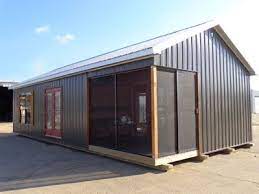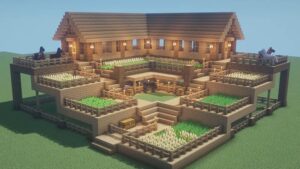General Shelters Building Emergency Shelters With Metal General Shelter

General Shelters Building Emergency Shelters With Metal General Shelter
Adapting emergency shelters into disaster preparedness plans becomes increasingly important as the number of natural disasters increases. There are many types of emergency shelters on the market, each touting a breadth of benefits and preparedness features. However, if your shelter is built with traditional materials (such as wood or concrete), then you won’t experience the full range of preparedness benefits of structural insulated General Shelters Building.
Natural disasters and foul weather resistance
In contrast to wood, concrete, or other traditional construction materials, SIPs are incredibly resistant to fire, wind, and foul weather. If you choose SIPs with mineral wool cores, any metal-skinned building product will be less prone to fire or flame damage than a conventional General Shelters Building product. Its melting temperatures exceed 1800 – 2000F, and it prevents the spread of fire without using harmful chemical additives.
Fast and Easy Installation of Insulated Panel Systems
You will often have very little lead time to build an emergency shelter during a crisis. Because structural insulated panel systems are designed to snap together, they can be built very quickly, and the materials, while extremely durable and strong, are lightweight enough to transport and assemble shelters with only a few people. As an example, you and a partner could build a small cottage or a family-sized shelter in less than 48 hours if the materials were purchased beforehand. If the structure has something to attach to (like a driveway), two people could erect and dry the panels for this modest-sized shelter within one day. Within 48 hours, your emergency shelter would be ready for use, and you and your family could sleep in it on the first night.
Relocation and structure of the surface
A metal SIP panel system can be mounted on almost any flat surface, whether you need to build your emergency shelter on a slab, a crawl space, a concrete pier, or elsewhere. Additionally, depending on how your shelter is constructed, you may be able to move it easily. Moving a structure built on a trailer (or that can be lifted onto a trailer) is only limited by the highway department’s restrictions.
Structural Integrity and Quick Deployment
Whether you require immediate protection from natural disasters or you simply need a temporary shelter to live in during a crisis recovery period, structural insulated panel systems are well suited for your needs. They are also easy to handle in tough field conditions, fast to install, and provide effective thermoregulation. If you want the best-quality steel-skinned insulated panels, make sure you buy them from a company that has a proven track record and only sells high-quality SIPs. If you choose a shelter that is weatherproof and comes with a warranty, you’ll be sure to construct the best emergency shelter available – when the time comes to build the shelter, you will be glad you did your research first.
How do I get a flat on in Sheltered Housing scheme?
Local councils and housing associations usually provide Sheltered Housing for rent. You should expect waiting lists and selection criteria for this type of accommodation because demand usually exceeds supply. A person who owns their own home may be viewed as a lower priority than those who do not have the option of buying a flat or are already tenants in social housing. In contrast, there is very little sheltered housing available to rent privately, and even though there may not be the same allocation criteria, private landlords may charge higher rents and may not offer the same protected contracts as housing associations or councils.







